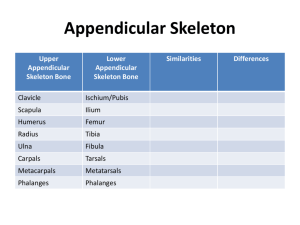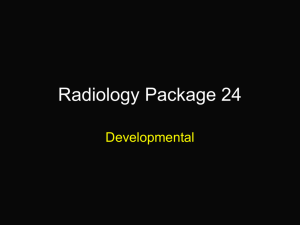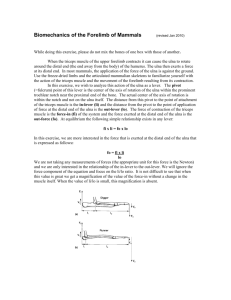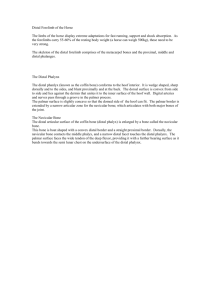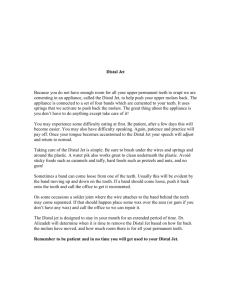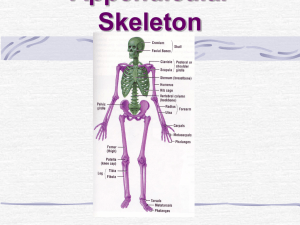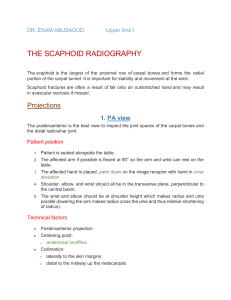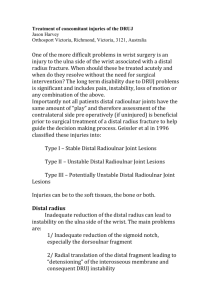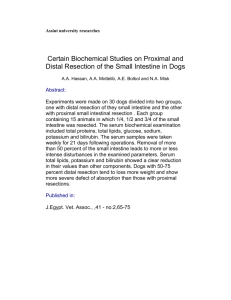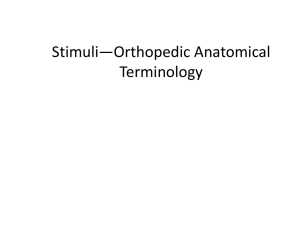9832 - Museum of London
advertisement
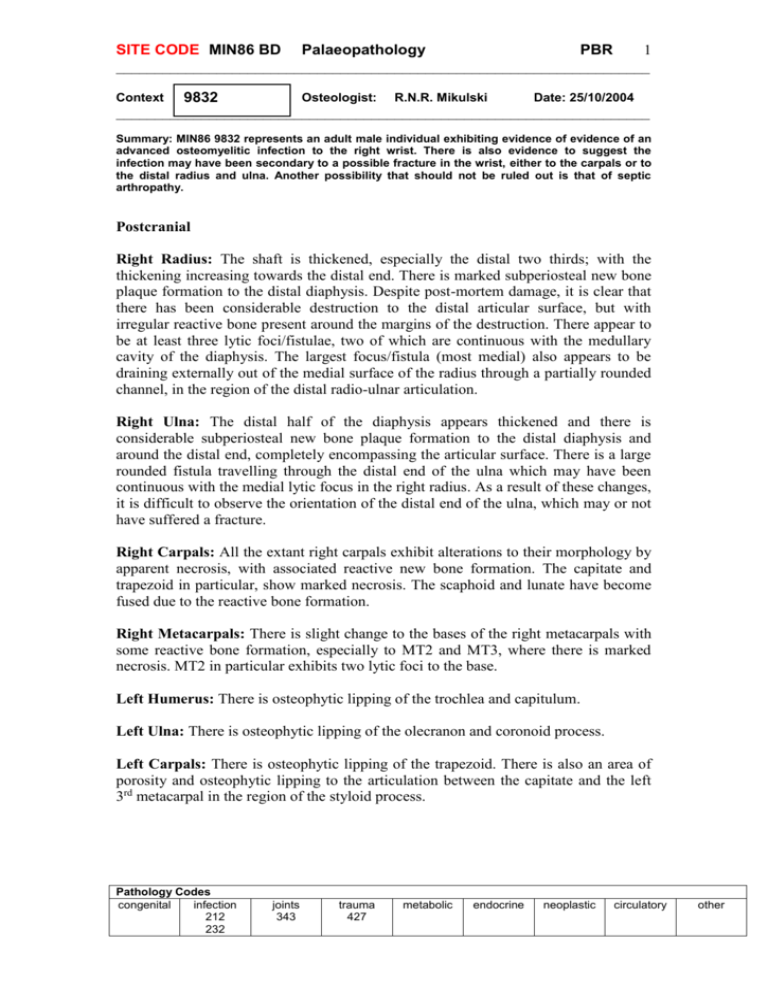
1 SITE CODE MIN86 BD Palaeopathology PBR _____________________________________________________________________ Osteologist: R.N.R. Mikulski Date: 25/10/2004 9832 _____________________________________________________________________ Context Summary: MIN86 9832 represents an adult male individual exhibiting evidence of evidence of an advanced osteomyelitic infection to the right wrist. There is also evidence to suggest the infection may have been secondary to a possible fracture in the wrist, either to the carpals or to the distal radius and ulna. Another possibility that should not be ruled out is that of septic arthropathy. Postcranial Right Radius: The shaft is thickened, especially the distal two thirds; with the thickening increasing towards the distal end. There is marked subperiosteal new bone plaque formation to the distal diaphysis. Despite post-mortem damage, it is clear that there has been considerable destruction to the distal articular surface, but with irregular reactive bone present around the margins of the destruction. There appear to be at least three lytic foci/fistulae, two of which are continuous with the medullary cavity of the diaphysis. The largest focus/fistula (most medial) also appears to be draining externally out of the medial surface of the radius through a partially rounded channel, in the region of the distal radio-ulnar articulation. Right Ulna: The distal half of the diaphysis appears thickened and there is considerable subperiosteal new bone plaque formation to the distal diaphysis and around the distal end, completely encompassing the articular surface. There is a large rounded fistula travelling through the distal end of the ulna which may have been continuous with the medial lytic focus in the right radius. As a result of these changes, it is difficult to observe the orientation of the distal end of the ulna, which may or not have suffered a fracture. Right Carpals: All the extant right carpals exhibit alterations to their morphology by apparent necrosis, with associated reactive new bone formation. The capitate and trapezoid in particular, show marked necrosis. The scaphoid and lunate have become fused due to the reactive bone formation. Right Metacarpals: There is slight change to the bases of the right metacarpals with some reactive bone formation, especially to MT2 and MT3, where there is marked necrosis. MT2 in particular exhibits two lytic foci to the base. Left Humerus: There is osteophytic lipping of the trochlea and capitulum. Left Ulna: There is osteophytic lipping of the olecranon and coronoid process. Left Carpals: There is osteophytic lipping of the trapezoid. There is also an area of porosity and osteophytic lipping to the articulation between the capitate and the left 3rd metacarpal in the region of the styloid process. Pathology Codes congenital infection 212 232 joints 343 trauma 427 metabolic endocrine neoplastic circulatory other 2 SITE CODE MIN86 BD Palaeopathology PBR _____________________________________________________________________ Osteologist: R.N.R. Mikulski Date: 25/10/2004 9832 _____________________________________________________________________ Context Discussion: The changes in the right wrist most likely represent a case of Osteomyelitis possibly complicated by Septic Arthritis. Osteomyelitis normally involves the metaphyseal region, where the fistulae appear to be concentrated and the infective process seems focussed along the centre of the wrist, apparently tracking across direct articulations (distal radius – scaphoid/lunate – capitate – 2nd/3rd metacarpals) – a process characteristic of Septic Arthritis. It’s possible that the original infection was itself secondary to a fracture most likely to the distal radius or ulna but possibly to one of the carpals. Should this be the case then Traumatic Arthritis would also have to be considered. A third possibility is that of Neurotrophic Arthropathy or Gummatous Arthritis, relating to Syphilis. Again this shows similar lesions to those described above, but such an infection would normally present other lesions in the skeletal remains. Neverthe-less it should not be discounted. The changes in the left arm are most likely to be age-related i.e. degenerative joint disease. It is however possible that they represent changes consequent to those in the right wrist as the individual may have compensated for a lack of movement in the right by exerting greater strain on the left arm. Pathology Codes congenital infection 212 232 joints 343 trauma 427 metabolic endocrine neoplastic circulatory other
